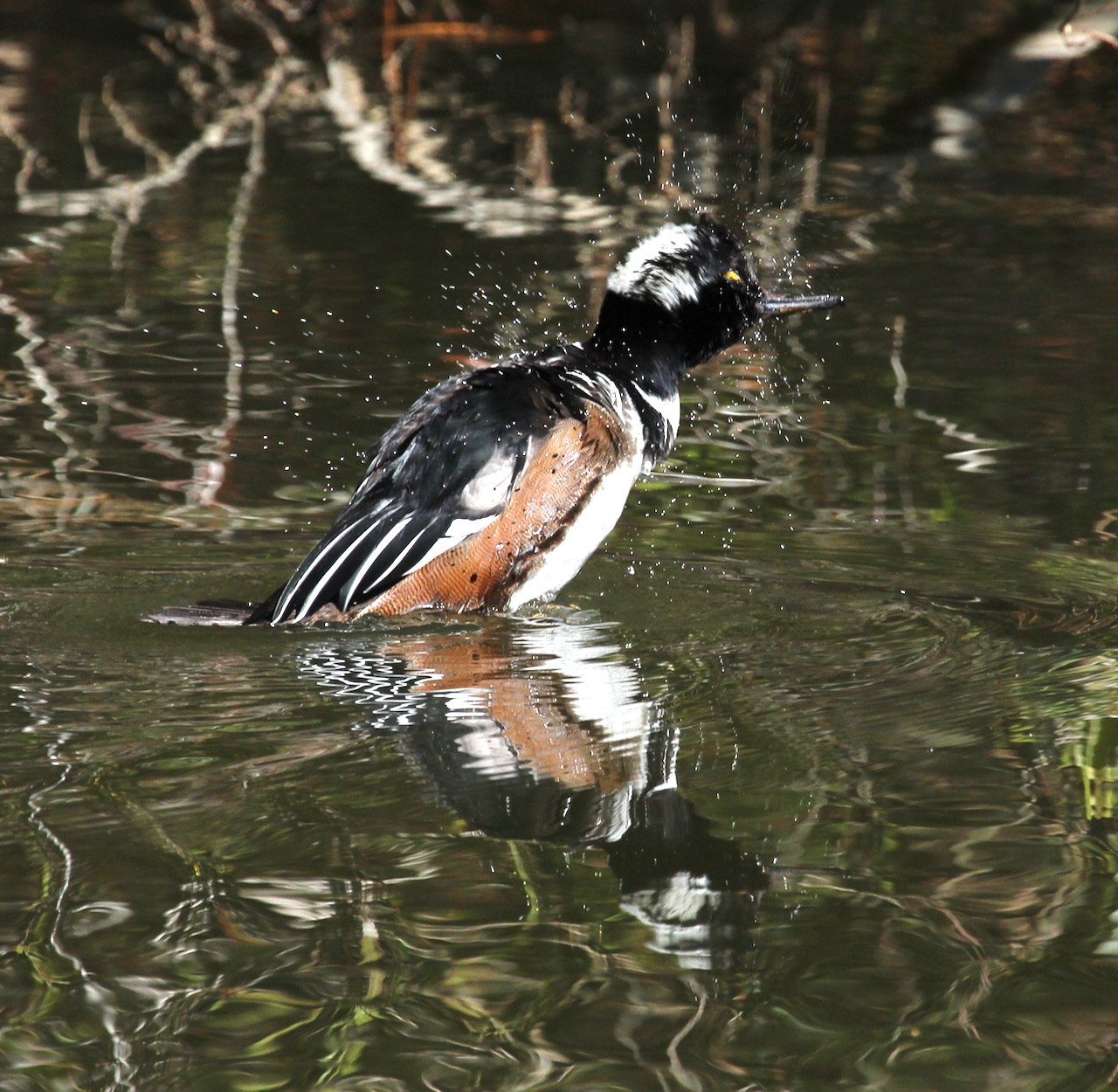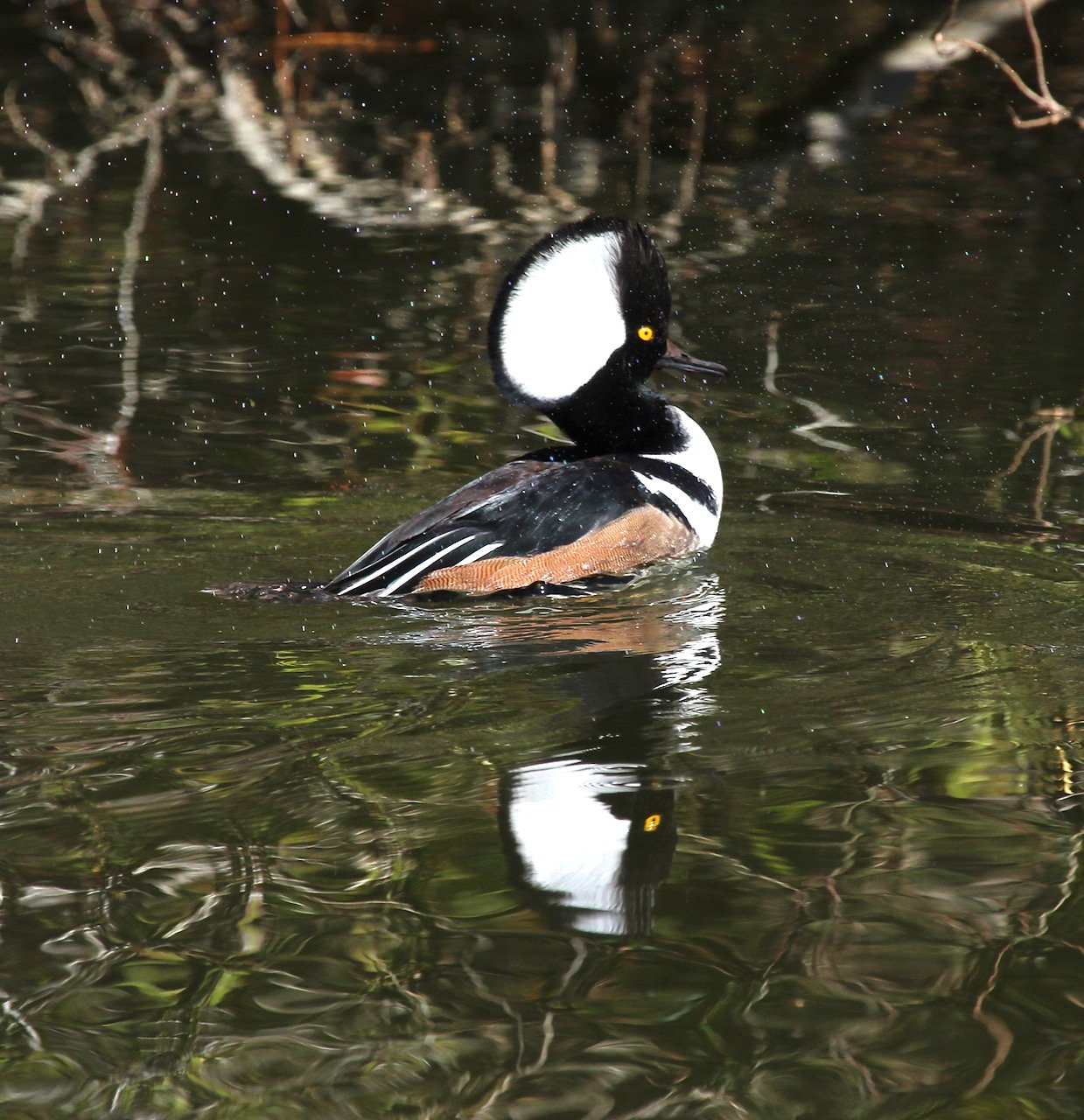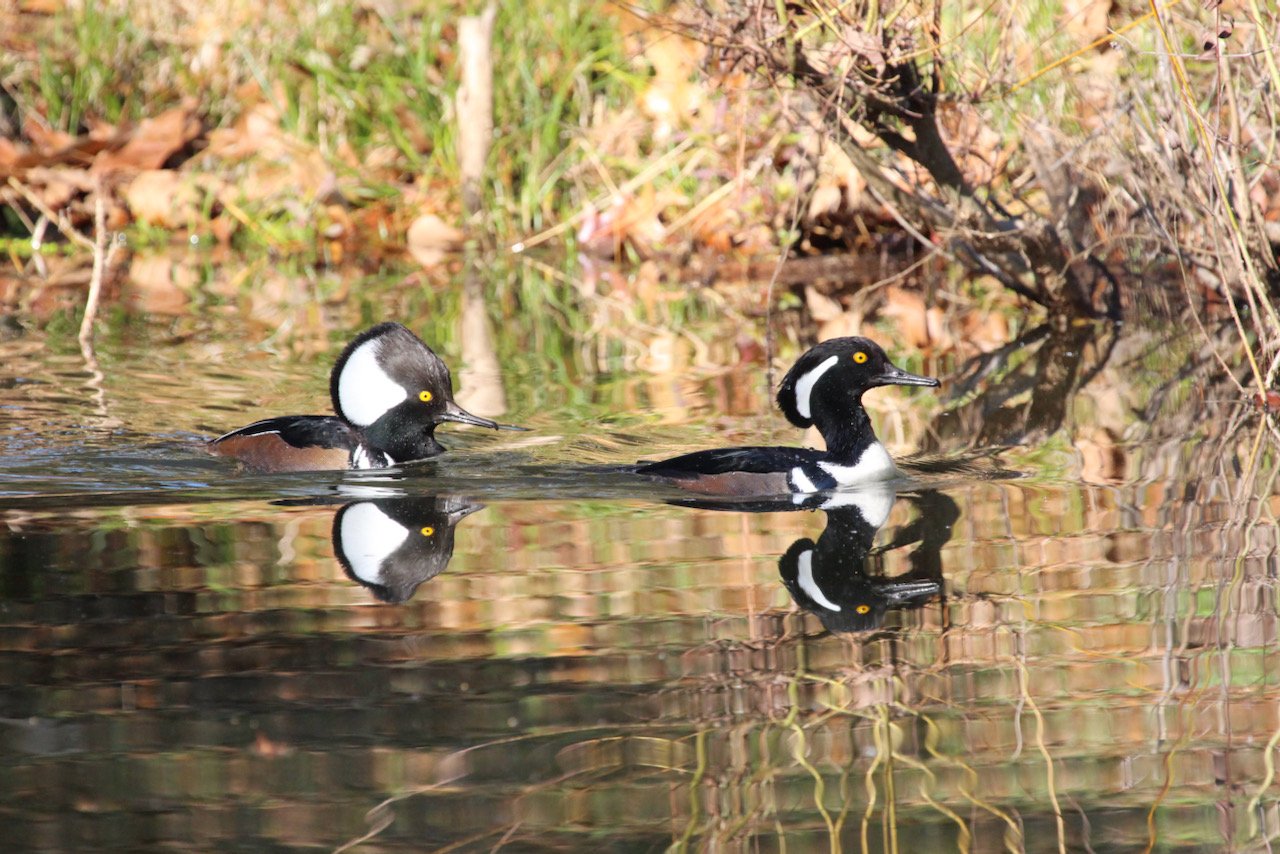Hooded Mergansers in the Hood ~ Ducks on the Pond!
I can still hear my Dad saying “ducks on the pond” as I stood at the plate. He was our third base coach for our baseball team. He was letting me know there were runners on base and we could really use a base hit to score a few runs. Maybe that’s why I get excited every time I see real ducks on a pond. It always triggers a nice memory.
I’ve been birding for quite a few years now, and the Hooded Mergansers have always been challenging to photograph. They are the smallest of the merganser family and they are fast in flight, and usually very active in the water. They breed up north in Canada and migrate south along the east coast in winter months, so they are here in South Carolina for only a short time. They are also very skittish and keenly aware of any movement or noise, so they are hard to get close to.
Usually I spot them in the winter months when I’m down at the Pitt Street Bridge in Mt. Pleasant. They love the shallow tidal water there for feeding on crustaceans, small fish, and aquatic insects.
At Pitt Street it is kind of hard to get real close to them. They tend to keep their distance from all of the birders that are trying their best with their long camouflaged zoom and fixed lenses to get crystal clear shots with the ducks eyes in focus. They have beautiful yellow eyes with a relatively small black pupil. If there is too much movement from the duck or if a photographer’s shutter speed is too slow the eyes will show up a little blurry. The picture may look nice but it’s very disappointing to a birder when the eyes aren’t in focus.
For the last couple of weeks Hooded Mergansers have been in our neighborhood, enjoying some of the small ponds. One pond in particular is small enough that the mergansers can’t get too far away from me and I can somewhat camouflage myself along the shoreline with some of the shrubbery. On several occasions they’ve come the closest I’ve ever been to a merganser.
Even though I was fairly close to both male and female Hooded Mergansers, the lighting was challenging with surrounding woods that darkened down the lighting. The male Hoodie has a large white and black crested display of head feathers. The strong contrast between white and black on the males also creates lighting challenges with camera settings.
It’s always hard to get two or more ducks in focus when they are so active. Hooded Mergansers are divers and every whipstitch they duck underwater (pardon the expression :)). They motor along apart and then come together, which makes depth-of-field challenging. Many shots are ruined by one duck being in focus and the other blurry.
As I mentioned, the male Hoodie has a black and white head and chestnut flanks. The head feathers expand doubling the size of the duck’s head when he is trying to show off for a female. The female Hoodie is a chestnut color, very demure and beautiful in appearance.
Occasionally, they will rise out of the water and flap their wings in a flutter. It is a way of reducing the amount of water weight on their wings by shaking off large water droplets. I notice they do this after spending quite a bit of time underwater. They also do this on occasion to flirt with a potential mate. In any event, it is always fun to photograph them when they perform this ritual.
Sometimes their tails lay flat on the water and other times their tails perk up and wag like a dog. They wag their tails out of excitement, but it can also be a way of flirting.
Reflections always add interest to photographs, so I was fortunate to get a number of images with strong reflections.
Hooded Mergansers have very different looks when they take their hoods off (when they flatten their head feathers).
When I see ducks on the pond, it is always exciting. There are so many varieties of ducks but the Hooded Mergansers have to be one of my favorites. I hope you enjoyed reading about them and seeing my photographs. I’ve only done one painting of them. It was a study depicting them in flight. Some day it would be fun to paint a realistic close-up of one with a strong reflection like you might see on a Duck Stamp.
Anyway, thanks for reading my journal and for your interest in my photography and art. Please check back soon to see what’s on my easel next.
“One of the joys of being an artist is having the freedom to follow my passion….”
What’s next?
Drawing by William R. Beebe











